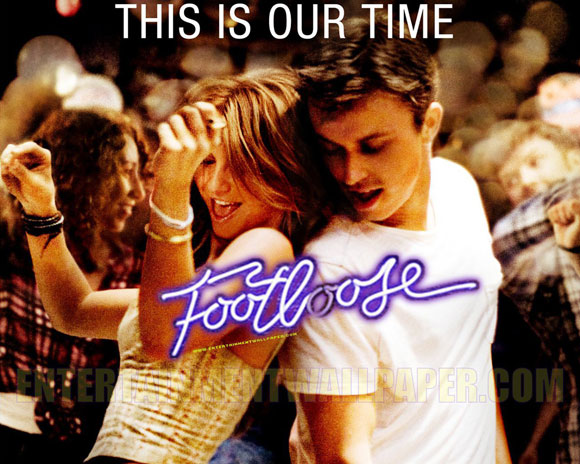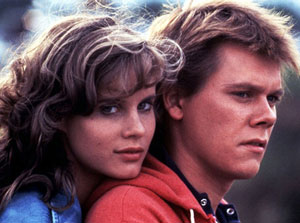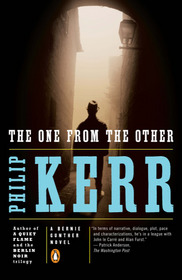 The 2011 update of “Footloose” not only follows the plot of the 1984 version, but pays respectful homage to the original in various ways–from the sameness of the characters, to Ren’s attire at the concluding dance, and to the final dance shot, which is taken right from the original.
The 2011 update of “Footloose” not only follows the plot of the 1984 version, but pays respectful homage to the original in various ways–from the sameness of the characters, to Ren’s attire at the concluding dance, and to the final dance shot, which is taken right from the original.
Yet, it’s also a different movie. In the 1984 movie, Bomont is a town that is simply behind the times; dancing was never allowed. But the 2011 version begins with a high-energy teen dance in Bomont. Five teens, who had been drinking, leave the dance and are killed in a head-on with a semi. That prompts the town to over-react by outlawing a wide range of activities in an effort to protect their children. Dancing and loud music are casualties.
Three years later, Boston boy Ren McCormack arrives in town to live with an aunt and uncle following the death of his mother (in the original, his family simply moved to Bomont). He arrives with plenty of angst and pent-up grief which, in this story of big-city boy comes to backwards small town, easily carries the appearance of rebellion. There’s a lot of James Dean here.

Kevin Bacon and Lori Singer, from the 1984 version.
The role of Ren made Kevin Bacon famous. This time, Ren is played by Kenny Wormald, whose previous acting credits include pretty much nothing. He’s not near the actor Bacon was, but boy, can he dance! He didn’t need a double, like Bacon did. However, a complaint: whereas you saw the joy of dancing in Bacon (and his double), Wormald’s dancing was much more serious. But alas, I’m being petty. I loved watching Wormald dance.
Julianne Hough, of Dancing with the Stars fame, did well in the role of Ariel Moore, the preacher’s daughter. She was more of a wild child than Lori Singer’s Ariel in the original, but there was a reason for that. Again, Singer was a better actress, but Hough can really dance–though this movie seemed more interested in eye candy than in showcasing her dancing ability.
Chris Penn killed with the role of Willard in the original…as did Miles Teller in the remake. That one’s a wash, if not tilted toward Teller.
Dennis Quaid had the misfortune of following John Lithgow in the role of Rev. Shaw Moore. He gave a strong performance (in the remake, Moore’s son was among the five teens killed). However, Lithgow absolutely nailed the role and defined it. I remember when Quaid played Doc Holliday in the movie “Wyatt Earp,” which came out the same summer as “Tombstone,” a movie in which Val Kilmer totally blew me away with his Doc Holliday. Quaid is condemned to be a commendable second.
They found a high-powered actress in Andie McDowell to play the minister’s wife. Dianne Wiest was far better in that role, as were her scenes with daughter Ariel and with her husband. McDowell played pretty much the same character, with the same scenes, but she succeeded in coming across as terribly bland.
Back to the story.
- We’re in Georgia this time, not Utah.
- There is, again, a jealous boyfriend of Ariel–in this case, a car racer.
- The tractor race is replaced (poorly) with a bus race.
- The “angry dance” scene takes place in a cotton gin.
- There’s the fight scene before the final dance, with some nice twists to it (two girls beat the crap out of one of the bad guys).
- There are blacks–many of them–in the update, but no racism themes, which was nice.
- The final dance is simply a fall dance, not a prom.
- The theme song is performed, well, by Blake Shelton instead of Kenny Loggins.
- They used a lot of the same music, but with very high energy dancing.
- The dancing in the remake is superb.
In short, the 2011 Footloose embraces everything good about the original, but updates it for today’s audiences.
One scene they left out, and which I was waiting for, came at the end of the original. It was when Rev. and Mrs. Shaw drove out to a place overlooking where the dance was being held and had a sweet scene together. They skipped that, and I missed it. I’ll bet they actually filmed it, but decided to cut it from the final release. Look for it in the DVD extras.
The 1984 Footloose is a classic, no doubt about it. The 2011 version is in no way a classic. But it stays true to the story of the original, and in so many ways pays tribute, recognizing it as a classic. It does what a remake should–updates a great story for a new generation. Too many directors get way too clever trying to inject their own twists on the plot. Director Craig Brewer–I commend your restraint.
1 Comment

 “The One from the Other” is book 4 of what began as a well-known set of books called the Berlin Noir Trilogy, which Philip Kerr wrote 1989-1991.
“The One from the Other” is book 4 of what began as a well-known set of books called the Berlin Noir Trilogy, which Philip Kerr wrote 1989-1991.


